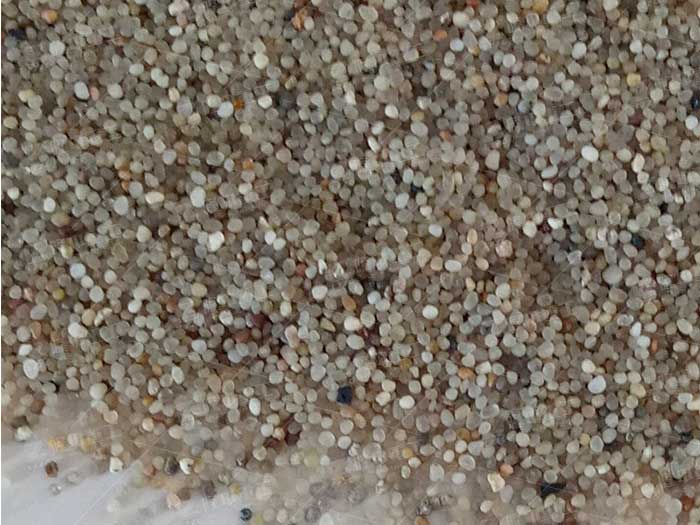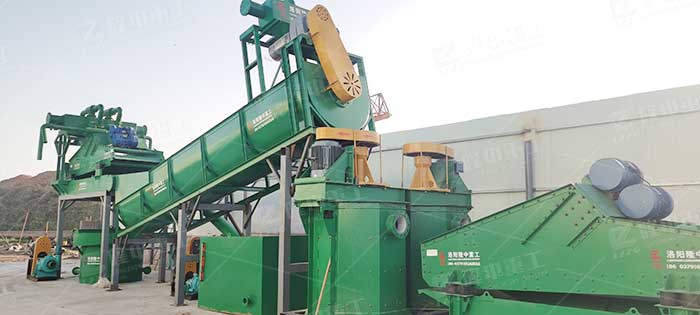
Menu
 LDHB Machines
LDHB Machines
In the field of petroleum, fracturing refers to a method of using hydraulic action to form cracks in oil and gas layers during the process of oil or gas production, also known as hydraulic fracturing. Quartz sand is a natural stable mineral with wide distribution and high hardness, and its main chemical composition is silicon dioxide (SiO2).
Hydraulic fracturing refers to pumping fracturing fluid into an oil well under high pressure, resulting in high pressure at the bottom of the well. When the pressure is high enough to fract a rock formation, fractures will form in the formation and expand forward to a certain space. In order to keep the fractures open, proppant must be filled with the fracturing fluid in the fractures after the rock formation is fractured. After the proppant is transported, the viscosity of the fracturing fluid is reduced and allowed to flow back, so that fractures with high conductivity are created. At present, the oil fracturing proppants used at home and abroad are generally divided into three categories: quartz sand, ceramsite proppants and coated proppants. In North American shale gas fracturing construction, the proportion of ceramsite proppant used is gradually decreasing. Considering the cost and economic effect of fracturing, quartz sand proppant is currently dominant in the application.

quartz frac sand
1. Sphericity and roundness
Sphericity, well understood, refers to the degree to which the fracturing proppant (i.e., quartz sand) is nearly spherical.
Roundness is explained in popular science China as the degree to which the cross section of the workpiece is close to the theoretical circle.
The sphericity and roundness of natural quartz sand should not be less than 0.6
2. Acid solubility
Acid solubility refers to the percentage of the mass of a certain mass of proppant dissolved by acid to the mass of the total proppant under the specified acid solution and reaction conditions.
Acid resistance is an important index of fracturing proppant. Proppants with good acid resistance can work for a longer time in acid rock formations and maintain good conductivity.

LDHB produce frac sand production equipment
3. Turbidity
Turbidity of proppant is the degree of turbidity of the liquid after adding a certain mass of proppant in a specified volume of distilled water, shaking and placing for a certain period of time, and the unit is FTU.
Turbidity mainly characterizes the surface smoothness of the proppant, and reflects the number and size of the particles on its surface. According to regulations, the turbidity of quartz sand for fracturing should not be higher than 100FTU.
4. Anti-shredding ability
For a certain amount of quartz sand proppant, the fracture rate determined by the pressure test under the rated pressure characterizes the anti-fragmentation ability of the proppant. The main factors affecting the fracture rate are quartz sand proppant roundness, sphericity, surface finish, microstructure and so on.
The fracture rate of quartz sand proppant affects fracture conductivity. The crushing resistance test of natural quartz sand proppants should use a crushing chamber within the specified size range.
5. Bulk density and apparent density
The bulk density of the quartz sand proppant is the proppant mass per unit accumulation volume (g/cm3), which reflects the overall density of the proppant accumulation. The main factors affecting the bulk density are the apparent density, roundness, sphericity, surface finish and so on of the sample.
For different densities of fracturing proppant, different test indicators are used. To sum up, the quartz sand for fracturing has the following requirements: uniform particle size and low density; high strength and low crushing rate; high roundness and sphericity; low impurity content; wide source and low price.